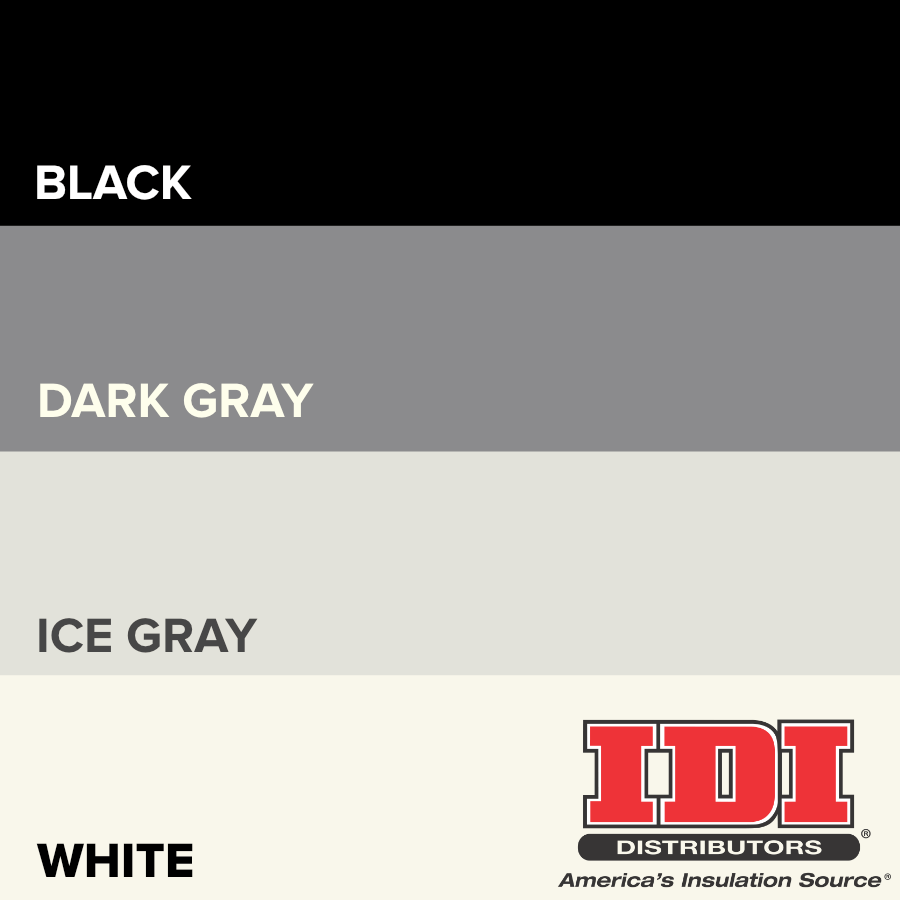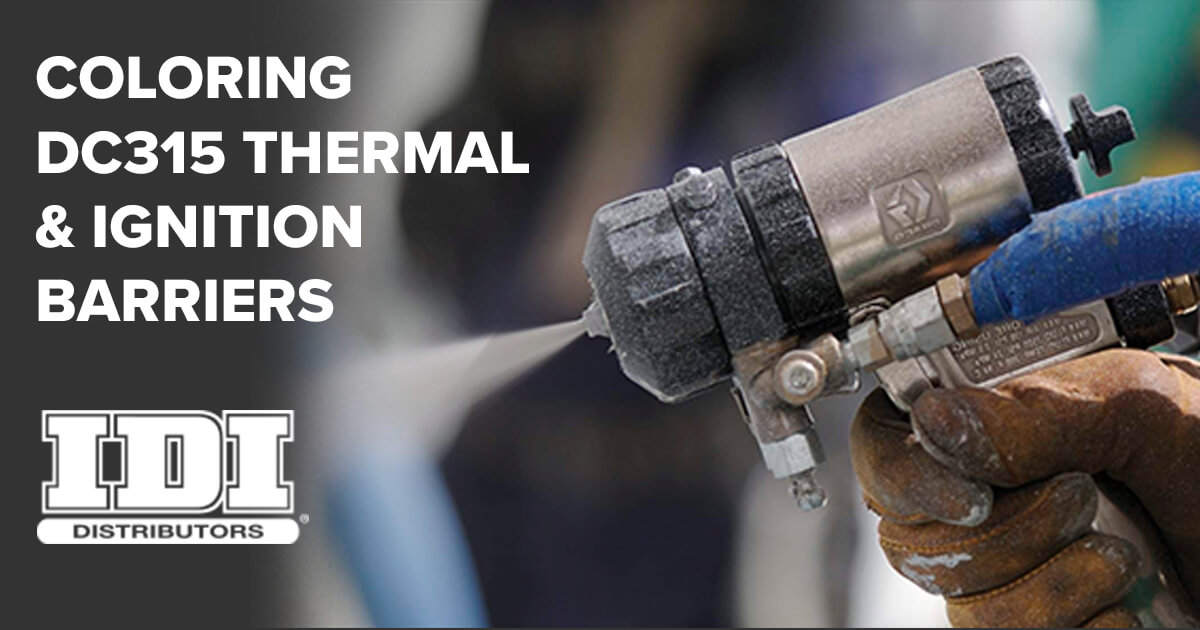Originally published September 2016, updated in September 2018.
If spray foam insulation is a part of your business, chances are you’ve encountered a client who has requested a colored finish. Most of the time this look is requested for a restaurant, gym, theater, or other places where the architect has opted for the “exposed” or industrial/open beam look.
Most requests for coloring relate to exposed foam where drywall may not be an option. When the project is in a residential attic, white coatings may be desirable. This is because they will be using the area for storage in an area with very little light. In a commercial application, however, customers often want black or some other color that fits within the design ideas for the space.
When the end user wants a pure or dark black over the foam, it can be very hard to achieve based on the chemistry of the coatings. Beyond this, retailers and other businesses request a myriad of colors. Now consider the fact that each color could conceivably require its own exhaustive testing to meet the code. Simply tinting the product to thousands of colors at a local store really isn’t an option. With all of that in mind, IFTI has tested the DC315 product with paint topcoats. In addition, after years of requests, IFTI has developed a black formula for DC315.
By using intumescent paint on structural steel, it’s possible to create a wide range of colors, but you need to know how it all works before you promise a rainbow of choices to customers.
While meeting the expectations of the client is important, it is equally important that you maintain the safety standards required by code. We’ve put together some quick guidelines to help you keep the client, the safety inspector, and your profits happy with intumescent paint colors.
Code Considerations
First and foremost, the building code requires all cellular plastics such as foam board, or spray foam insulation to be separated from occupied space by a 15-minute thermal barrier, such as 1/2” drywall or an approved alternate method (Specific Approval) such as an intumescent coating.
This means that when your client has an occupied space with exposed foam they want painted, the code requires that the coating applied directly to the foam be tested in accordance with the NFPA 286 burn test using the AC377 acceptance criteria.
Additionally, as of June 1, 2016, AC456 was adopted and included into the AC377. The added criteria were set in place to ensure the coatings used in the marketplace are manufactured to the same standards as the coatings used for their approved testing. Currently, DC315 is the only intumescent coating that meets the AC456 Acceptance Criteria.
The Characteristics of DC315
While DC315 can be tinted with up to 1 oz. of pigment per gallon without compromising the properties of the coating, the result is often less than desirable. DC315 is 63-67% solid, making it difficult to produce the full spectrum of colors.
“Fire safety and reducing liability for you and your contractors is number one to IFTI … AC456 does NOT allow for a coating company to vary its formulation to the extent that is necessary to create a “Black.” In other words, it is NOT the formula that was tested. If it was as easy as adding tint, believe me, all of the intumescent coating manufacturers, not only in the SPF industry but the steel industry as well, would produce a black … [but] adding that much tint DOES change the property of the coating, while top coating with the prescribed products or equivalents above does not!”
-Gary Wolfe, Vice President of IFTI
The Solution
Although coloring limitations exist, DC315 still offers some design flexibility. You’re not stuck using a white coating for every project, which is sure to make your customers happy. Applying a vinyl-based latex product provides a safe solution when you have a specific color in mind.
What Is Intumescent Paint?
To create the desired color for you and your customer, IFTI recommends using a top coat with a water-based intumescent paint such as Sherwin Williams A-100, ProMar 200/400 or Dryfall paint products. You should never use a high-quality acrylic for coating spray foam insulation because it is essentially adding a fuel source for potential fires to the surface.
Why Use Intumescent Paint?
Not only will using a vinyl-based latex product produce better results in preserving the safety performance of the intumescent coating, but it will also cost you less. What’s more, intumescent paint applications have been verified as safe in IFTI DC315 evaluation reports. That means using intumescent paint will not affect the performance of DC315, and you can expect code-compliant levels of fire resistance.
Alternatively, you can purchase DC315 from IDI Distributors in four different shades, eliminating the need to apply an extra coating. The shades we offer include:
- Black
- Dark Gray
- Ice Gray
- White

Get Started
Every day, more code officials, consumers, and property managers are understanding the need and requirements for intumescent coatings. There has never been a better time to make sure your crews know how to get the best coverage and properly install them. Always keep the buckets over 70 degrees, mix them for 5 full minutes, use a gallon per minute sprayer, and the right tip size.
For additional information on spray foam insulation, top coating and increasing your profits, contact your local IDI rep today. You can also view our video resources to get thorough answers to your most burning questions or attend one of our regional training events!
